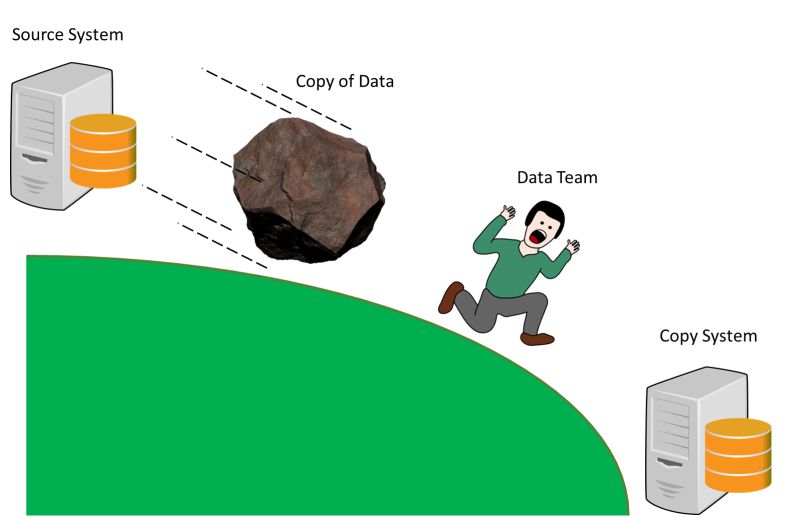We've been having a lot of conversations about data products and the whole shift-left movement. But what exactly does shifting left with data mean, and why is it crucial for the modern data ecosystem?

Understanding Shift-Left in Data
Shifting left with data involves getting the system of record (the system that created the data) to change its logic and processing to accommodate consumer requirements directly, rather than the traditional practice of copying data to secondary infrastructure (e.g., a data warehouse) and fixing or amending it there.
The Problems with Traditional Approaches
Relying on secondary infrastructure for data processing comes with several well-documented issues:
- Out of Sync Data: Downstream teams spend a lot of time reconciling data, and sometimes it doesn't reconcile at all.
- Errors in the Copy Process: Downstream teams often need to investigate and fix errors.
- Misaligned Business Rules: Consumers create business rules that don't match the original business process, leading to conflicts.
- Lack of Ownership: When downstream teams use "fixed data," the original process owners disown it, leading to a lack of trust.
- Increased Costs: Extra infrastructure, support, and operational teams are required to "fix" the data, leading to duplicate data platforms and processes.
Why Shift Left with Data?
Focusing on fixing data at the source, rather than downstream, offers several advantages:
- Quicker: System teams understand the domain, business process, logic, and data.
- Cheaper: Fixing bugs in the source system is often less expensive than setting up new infrastructure.
- Lower Risk: Fewer moving parts reduce the risk of data proliferation and ensure data accuracy.
Implementing Shift-Left for Data Products
Data products should ideally be built directly from transactional systems data, using techniques like data virtualization or data fabric to query the database directly. These data products should be created by the teams that own the system, ensuring accuracy and efficiency.
Real-World Application and Challenges
While this approach sounds ideal, it’s not always easy to implement. Challenges include:
- System Complexity: Large systems like SAP can be difficult to change.
- Performance and Security: Concerns about system performance and compliance can hinder direct data access.
- Resource Constraints: System teams may lack the time, expertise, or resources to make necessary changes.
- Legacy Systems: Older systems may have no one left who understands the code.
Moving Forward
Despite these challenges, moving to a shift-left approach offers significant benefits. Here’s how to start:
- Align Enterprise Architecture: Ensure your enterprise architecture strategy supports direct data product creation from transactional systems.
- Promote Data Ownership: Encourage system teams to take ownership of their data, including its preparation for downstream use.
- Utilize Data Fabric and Data Virtualization: These technologies can bridge the gap, allowing for direct querying of data without extensive copying.
Embracing Sustainability
The shift-left principle also aligns with sustainability goals. By reducing data duplication and streamlining processes, we can lower the carbon footprint of our data infrastructures. This focus on efficiency is crucial as organizations strive for sustainability.
Addressing the Human Factor
A critical factor in this shift is people. Even with advanced technologies like LLMs and data fabrics, the human element remains vital. Business leaders must be able to identify and frame problems effectively. This requires a cultural shift where all teams collaborate to achieve organizational goals.
Conclusion
Shifting left with data represents a fundamental change in how organizations handle data and analytics. By focusing on fixing data at the source, businesses can save time, reduce costs, and improve data accuracy. This approach also aligns with sustainability goals and requires a cultural shift towards greater collaboration and ownership. As we move forward, embracing these principles will be key to thriving in the modern data ecosystem.
Call to Action
If you're interested in exploring how shifting left with data can benefit your organization, or if you want to learn more about building a modern data ecosystem, feel free to reach out. Let's discuss how we can drive innovation and efficiency in your data processes.

